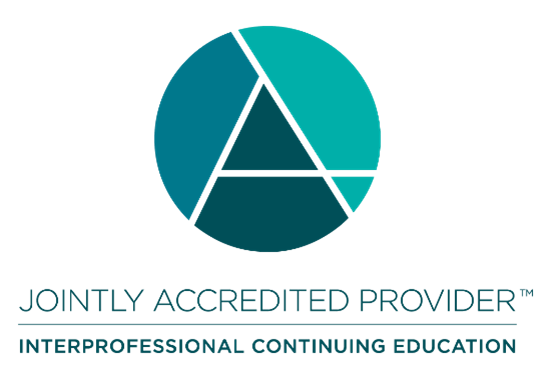Hospital Flow Professional Development Program
Hospital Flow Professional Development Program
Don't miss out! Join our exclusive Informational Call with faculty on Wednesday, May 15, 2024, at 1:00 PM ET. Gain valuable insights and register now to secure your spot.
Not receiving IHI emails? Please ask your IT department to add the ihi.org domain to your organization's Safe Senders list.
Please review our Cancellation Policy
*Prices are listed in USD
Deliver the Right Care, in the Right Setting, at the Right Time
Upcoming Informational Call Wednesday, May 15, 2024, at 1:00 PM EST. Register now.
The High Stakes of Suboptimal Flow
Optimizing patient flow throughout the hospital is essential to ensuring safe, high-quality, patient-centered care and capacity for growing and aging populations. Providing timely access to appropriate sites of care and optimizing hospital flow are critical levers that increase value for patients, clinicians, and health care systems. Patient and clinician experience is strongly influenced by the efficiency and effectiveness of care reflective of hospital flow.
Poorly managed flow has critical implications, such as:
- Delaying treatments
- Failing to provide the right care, in the right place, at the right time
- Putting patients at risk for potential harm and undesired outcomes
- Increasing the burden on clinicians and contributing to moral distress
Diversions, long waits, and delays in the emergency department (ED) are a hospital-wide issue, not solely an ED issue. Waits are often the result of ED beds being occupied by patients waiting for admission to the hospital (known as boarding). Lack of inpatient capacity can also result in patients boarding in the post-anesthesia care unit (PACU) and being managed in "off-service" units.
While many hospital leaders are aware of the problem, they may struggle with developing the strategies needed to address these complex issues.
Agenda
This program consists of 10 live virtual sessions from 10:00 AM – 1:30 PM ET.
Participants must attend all live sessions to receive a certificate of completion and credits for this program.
Continuing Education

In support of improving patient care, the Institute for Healthcare Improvement is jointly accredited by the Accreditation Council for Continuing Medical Education (ACCME), the Accreditation Council for Pharmacy Education (ACPE), and the American Nurses Credentialing Center (ANCC), to provide continuing education for the health care team.
Continuing education credits for this program are still being finalized and will be updated shortly.
The Institute for Healthcare Improvement designates this blended learning activity for a maximum of 30 AMA PRA Category 1 Credits™. Physicians should claim only the credit commensurate with the extent of their participation in the activity. This activity may also be applicable for other professions that accept AMA PRA Category 1 Credits™.
As a result of this program, attendees will be able to:
- Assess the current state of patient flow and determine major opportunities for improvement.
- Analyze organizational capability, change concepts, and successful interventions for creating a sustainable system for system-wide hospital flow.
- Identify the variety of hospital-wide and community strategies and approaches needed to deliver the right care in the right place and at the right time.
CE Instructions
To be eligible for a continuing education certificate, attendees must complete the online evaluation within 30 days of the continuing education activity. After this period, you will be unable to receive a certificate.
Continuing education (CE) credits will not be awarded for non-educational activities, including (but not limited to) meals, breaks, and receptions.
Disclosure: None of the planners, presenters, or staff for this educational activity have relevant financial relationship(s) to disclose with ineligible companies whose primary business is producing, marketing, selling, re-selling, or distributing healthcare products used by or on patients.
Planning Committee
- Lauren Downing, Director, Program Management, IHI
- Victoria Lewis, Marketing Manager, IHI
- Katharine Luther, RN, MPM, (retired) Vice President, IHI
- Kedar Mate, MD, President and Chief Executive Officer, IHI
- Patricia McGaffigan, RN, Vice President, IHI
- Frederick Ryckman, MD, (retired) Vice President for Medical Operations, Cincinnati Children’s Hospital Medical Center
- Patricia Rutherford, MS, (retired) Vice President, IHI
- Lloyd Provost, Statistician, Senior Improvement Advisor, Associates in Process Improvement
- Marianne Smith, MAS-PSHQ, BSN, RN, CPPS, Project Director, IHI
- Cindy Betti-Sullivan, Senior Director, Program Design, IHI
- Jane Taylor, EdD, Improvement Advisor, IHI
Already Attended?
To view your continuing education (CE) credits:
- Click on the "My IHI" link on the top of this page.
- After you've logged in, click on the "Credits" tab to see CE information.
Your program materials will remain in the Education Platform. To access the materials:
- Visit Education.ihi.org and log in with your MyIHI credentials.
- Click "Go to Learning Center" and then click "Launch" next to your course name.
- Use the left-hand navigation to find the relevant course materials.
Materials
If you are registered for this program and would like to access the available materials, please follow these steps:
- Visit Education.ihi.org and log in with your MyIHI credentials.
- Click "Go to Learning Center" and then click "Launch" next to your course name.
- Use the left-hand navigation to find the relevant course materials.
Visit the IHI Education Platform Orientation for video instructions on finding your course materials.
PLEASE NOTE: Not all session materials may be available for viewing. Only materials that have been submitted previously by presenters before a program will be made accessible to attendees.
Fees
IHI may, at its discretion, cancel, postpone, or otherwise modify programs at any time, with or without notice. If IHI does so and as a result, a registrant is unable to participate in the program, IHI will refund the registration fee.
Regular Rate: USD $5,500 per person
Group Rate: USD $4,675 per person
Organizations sending three or more participants are eligible to receive the group rate. To register a group, please complete the Group Registration form.
Scholarships
IHI is pleased to offer a limited number of 15%, 25%, and 50% scholarships to assist with program registration costs for those working in:
- Independent, United States Federally Qualified Health Centers (FQHCs) that are not affiliated with a hospital or health system
- Critical Access Hospitals
- Independent practices with fewer than 20 physicians
- Hospitals with fewer than 50 beds
- Members of America's Essential Hospitals
- 501(c)(3) organization with a defined operating budget of less than $5 million, serving community-based populations
- Ministries of Health
- Faith-based health institutions
- Skilled Nursing Facilities
Scholarship details for this program are still being finalized and will be updated shortly.
IHI will review all Scholarships on an individual basis. If multiple individuals from the same organization wish to apply for a scholarship, each individual must submit an application. Group discounts are also available.
To ensure equal distribution of funds, IHI will review all scholarship applications using the same scoring criteria. All awarded amounts are final.
Please note scholarships are available for program registration costs only and do not cover travel, food, or accommodation costs associated with attending a program.
Please note:
- If you are eligible for a scholarship — because you qualify for a membership rate or you have received a need-based scholarship — it will be automatically applied to your registration.
- After checkout, you will receive a confirmation of purchase. You can also print an invoice from your online profile 24 hours after your purchase.
Cancellations, Refunds, Substitutions
Registration Fee of $2,950 or more
- Payments: Full payment is due 60 days before the start of the program. If payment in full is not received within 60 days prior to the program start date, IHI will notify you and cancel your registration.
- Credit card payments: Enter your credit card information online during the registration process, or call the IHI Customer Experience Department to process payment over the phone.
- Check payments: Please mail a copy of the invoice with your check made payable to IHI.
- Cancellations: For cancellations made within 45 days before the start of a program: Registration fees are fully refundable if a written request is received by info@ihi.org on or before 45 days before the start of the program.
- Refunds: IHI will issue all refunds in the original payment type (credit card or check) within 30 days. Registrations received after 45 days or less before the start of the program are not refundable.
- Substitutions: One attendee may be substituted for another at any time by calling the IHI Customer Experience Department or emailing info@ihi.org.
Our Guarantee to You
If for any reason you are not completely satisfied that your attendance in an IHI educational program is a valuable experience, IHI will gladly refund your registration fee per the policies noted above. Please note that due to unforeseeable circumstances, last-minute changes in program titles, speakers, or presentations may be unavoidable.













